Beat the Frost with Natural Terra-Cotta Containers
As the first frost blackens the summer bedding in our pots and containers, thoughts may go to replanting for the spring with hardy bedding plants and spring-flowering bulbs. It’s a good time to think about replacing old pots or adding new ones, but with the wide range of styles and materials available, what do you buy?
Of all the materials that we use in our gardens, perhaps the most tactile and versatile is terra-cotta. Pots made from its warm colors, dusty yellow through rich brown, have been a feature of gardens since ancient times. This time of year, however, the biggest concern that most gardeners have is the susceptibility of terra-cotta to frost damage. Terra-cotta is very porous; it soaks up water, which freezes and becomes ice. Ice expands and can shatter a the pot. Let’s look at some ways to prevent this.
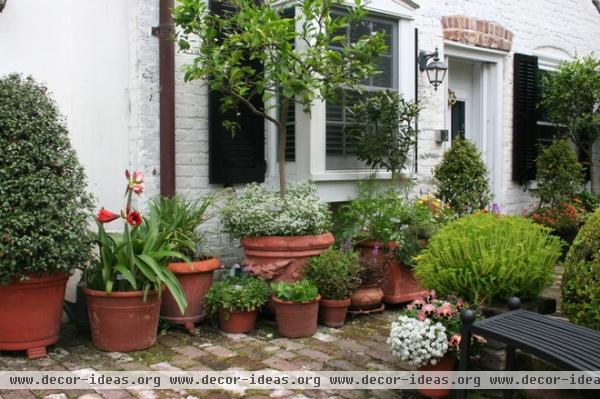
The simplest solution, you may say, is to take pots undercover into a frost-free place, but this is not always possible if pots are heavy or have large, mature plants in them. If you do leave your pots outside all year, there are ways that we can help terra-cotta survive everything the winter months can throw at it.
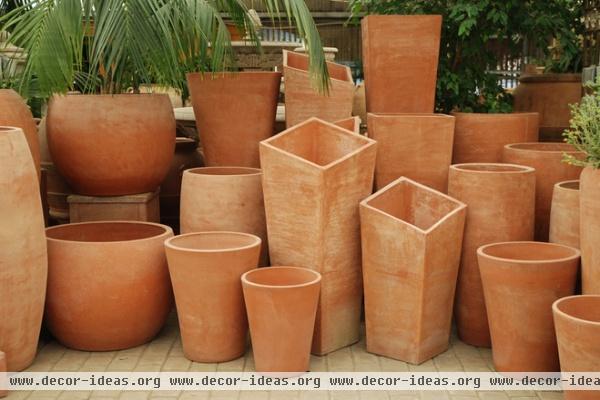
Select the Right Pot
Not all terra-cotta pots are the same. The type of clay used combined with the temperature the pots are fired at generally determine how frost resistant the pot will be.
When buying terra-cotta pots, you will generally find them labeled as either “frost resistant” or “frostproof.”
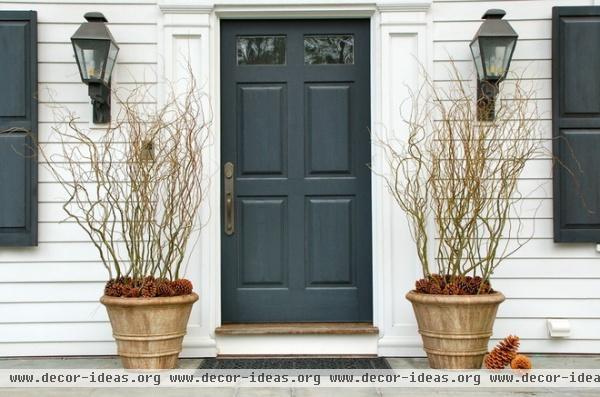
Frost-resistant pots. A lot of gardeners believe that the term “frost resistant” is meaningless when talking about terra-cotta pots. “Frost resistant” pots tend to be the next level up from the low priced, very orange pots that have been mass produced and fired at a lower temperature.
In zones where frosts tend to be light or nonexistent, it may be worth looking for pots labeled as “frost resistant” as they should be less porous. having been fired at a higher temperature.
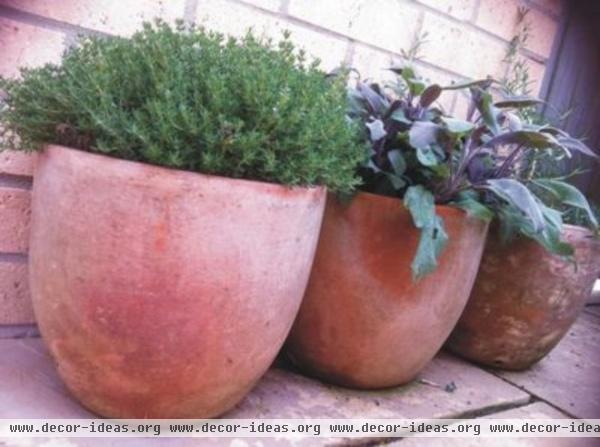
Frostproof pots. “Frostproof” pots should be just what the name implies, able to survive any amount of frost, as they are fired to a high temperature resulting in a pot that does not allow water to soak into it. In the production of frostproof pots, the newly thrown, or molded, pots are allowed first to dry naturally, and then fired to a very high temperature for 12 to 18 hours. They are then allowed to cool slowly over the next 24 hours.
Though no terra-cotta pot is fully proofed against the lowest temperatures, you will find that most suppliers of frostproof pots will guarantee them for 10 years against frost damage.
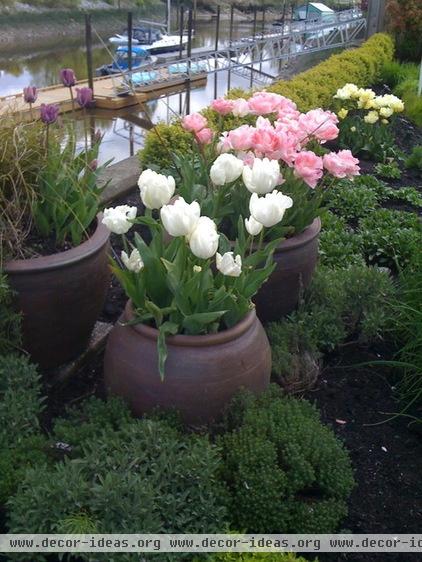
Salt-glaze pots. If you still aren’t confident about using traditional looking terra-cotta pots in your winter conditions, then it is worth considering salt-glaze pots. These are the highest fired pots that are normally available to gardeners. The high temperatures that they are subjected to cause the clay to become vitrified, bonding the molecules in such a way that water cannot penetrate.
The pots can be found glazed or unglazed, but both are very durable and highly frostproof.
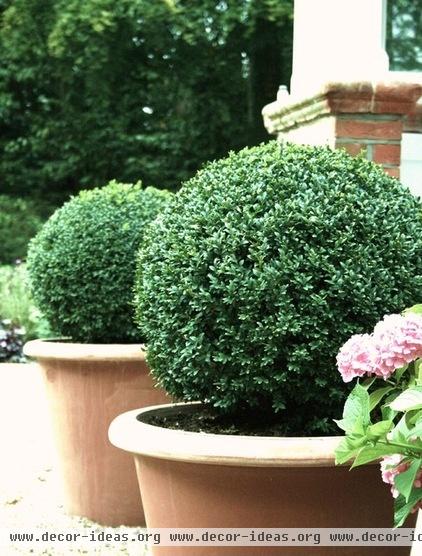
Treat Pots to Help Prevent Frost Damage
There are ways to treat old and new pots to help prevent frost damage by stopping water penetration. There are specific waterproofing products on the market that you can paint or spray on to create a waterproof barrier, but perhaps the easiest and most cost-effective way is using a PVA (polyvinyl acetate) glue solution.
Using a 10:1 water and PVA glue solution, fill a container large enough for your terra-cotta pot to be submerged. Dip for 30 seconds, drain and allow to dry for 24 hours. The pot should then be fully sealed against water penetration.
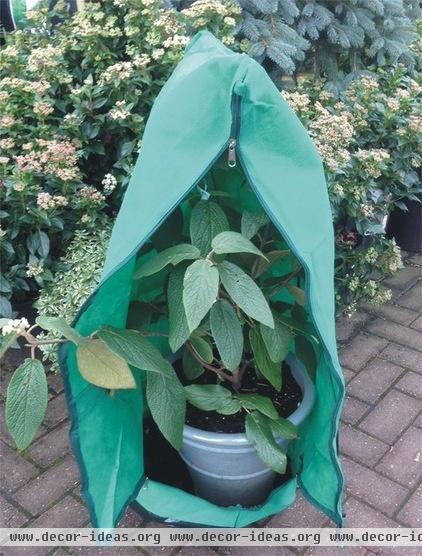
Practice Other Protective Methods
If you’re not keen on chemically treating your pots, or if it’s just not practical, the only solution to prevent frost damage is to wrap them up.
Use protective plant covers. The traditional method was to encase them in straw secured with hessian. Today we use horticultural fleece or polythene bubblewrap to enclose both pot and plant. It’s worth noting that there are various grades of horticultural fleece; a standard garden grade should protect down to 26.6 degrees Fahrenheit (-3 degrees Centigrade), you can find heavier grades that will protect to 21 degrees Fahrenheit (-6 degrees Centigrade).
The ultimate in frost protection, though, is one of the new zip-up frost covers, which completely envelop both the plant and container, protecting the roots, foliage and the pot. Made of breathable fleece, it should protect to 17.6 degrees Fahrenheit (-8 degrees Centigrade). It can be fully zipped and has a drawstring toggle to keep pots snug and frost free.
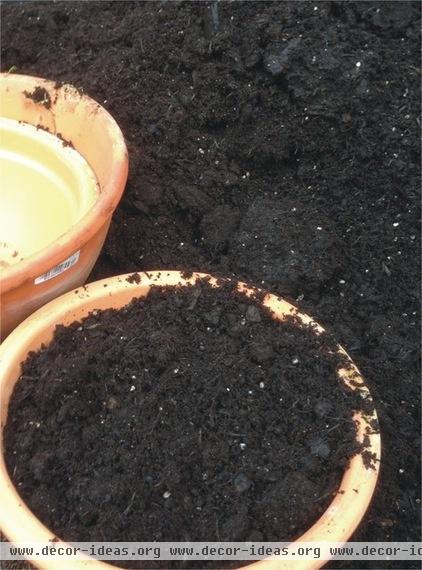
Keep pots dry. Frost damage to terra-cotta pots happens when water soaks into the pot, freezes and expands. If you keep the pot as dry as possible, you can stop or reduce any damage.
There are two simple tricks we can try that can keep the pots as dry as possible:
Use a well-drained potting compost: Traditionally, compost for terra-cotta pots has been a loam based compost rather than peat based. The reason for this is that loam composts tend to be better at holding moisture, which is great for summer but not so good for the winter months. Adding more potting grit to your potting compost will help it drain more quickly and thus keep your pot drier.Raise pots from the ground using pot feet: By raising the pot base off the ground, it will also help the pot drain more freely.
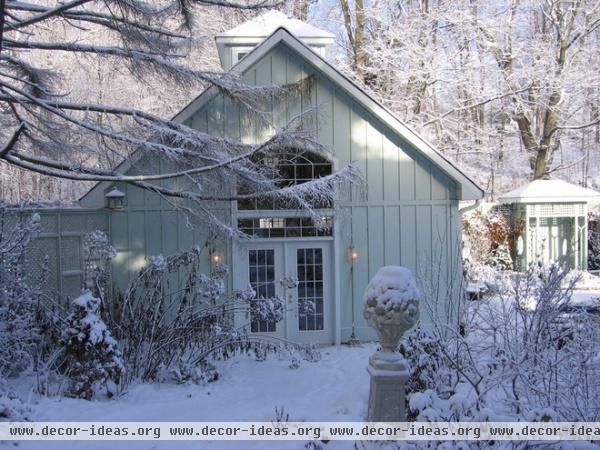
Following all or even some of these tips cannot guarantee a safe passage for your terra-cotta pots through the winter months, but at least it can give you a fighting chance.
Above all, take time to select the right pot in the first place. If you are in a zone where you are certain to have hard winters, then invest in the best frostproof pots you can find.
More: 7 Container Plantings to Bring Winter Gardens to Life












